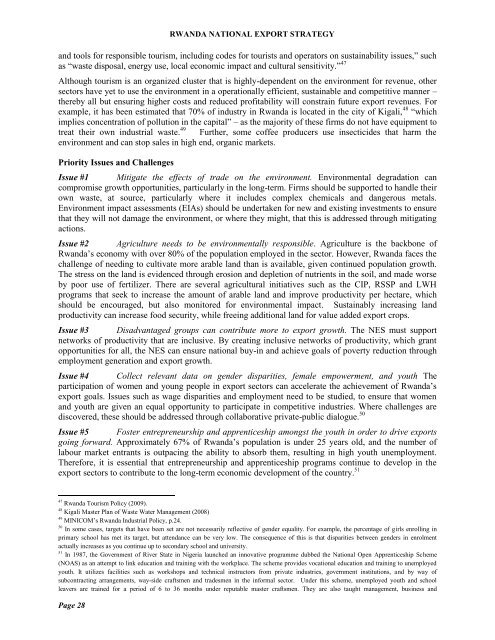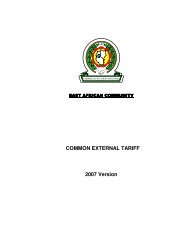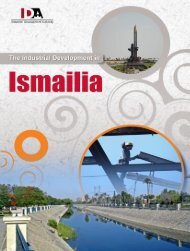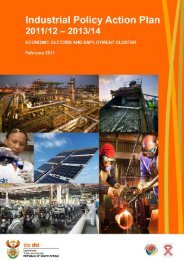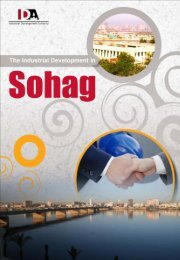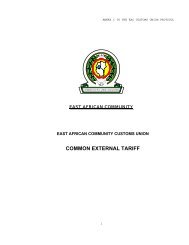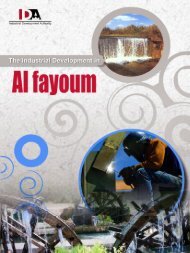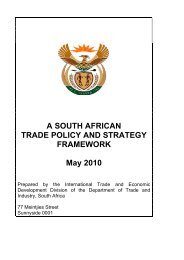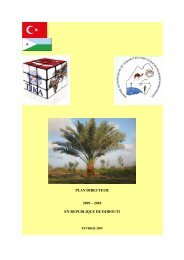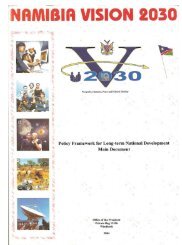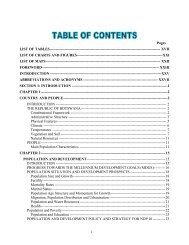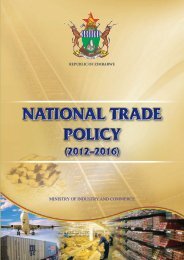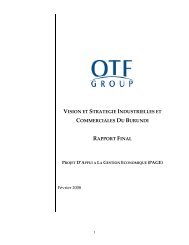rwanda national export strategy - minicom
rwanda national export strategy - minicom
rwanda national export strategy - minicom
Create successful ePaper yourself
Turn your PDF publications into a flip-book with our unique Google optimized e-Paper software.
RWANDA NATIONAL EXPORT STRATEGY<br />
and tools for responsible tourism, including codes for tourists and operators on sustainability issues,‖ such<br />
as ―waste disposal, energy use, local economic impact and cultural sensitivity.‖ 47<br />
Although tourism is an organized cluster that is highly-dependent on the environment for revenue, other<br />
sectors have yet to use the environment in a operationally efficient, sustainable and competitive manner –<br />
thereby all but ensuring higher costs and reduced profitability will constrain future <strong>export</strong> revenues. For<br />
example, it has been estimated that 70% of industry in Rwanda is located in the city of Kigali, 48 ―which<br />
implies concentration of pollution in the capital‖ – as the majority of these firms do not have equipment to<br />
treat their own industrial waste. 49 Further, some coffee producers use insecticides that harm the<br />
environment and can stop sales in high end, organic markets.<br />
Priority Issues and Challenges<br />
Issue #1 Mitigate the effects of trade on the environment. Environmental degradation can<br />
compromise growth opportunities, particularly in the long-term. Firms should be supported to handle their<br />
own waste, at source, particularly where it includes complex chemicals and dangerous metals.<br />
Environment impact assessments (EIAs) should be undertaken for new and existing investments to ensure<br />
that they will not damage the environment, or where they might, that this is addressed through mitigating<br />
actions.<br />
Issue #2 Agriculture needs to be environmentally responsible. Agriculture is the backbone of<br />
Rwanda‘s economy with over 80% of the population employed in the sector. However, Rwanda faces the<br />
challenge of needing to cultivate more arable land than is available, given continued population growth.<br />
The stress on the land is evidenced through erosion and depletion of nutrients in the soil, and made worse<br />
by poor use of fertilizer. There are several agricultural initiatives such as the CIP, RSSP and LWH<br />
programs that seek to increase the amount of arable land and improve productivity per hectare, which<br />
should be encouraged, but also monitored for environmental impact. Sustainably increasing land<br />
productivity can increase food security, while freeing additional land for value added <strong>export</strong> crops.<br />
Issue #3 Disadvantaged groups can contribute more to <strong>export</strong> growth. The NES must support<br />
networks of productivity that are inclusive. By creating inclusive networks of productivity, which grant<br />
opportunities for all, the NES can ensure <strong>national</strong> buy-in and achieve goals of poverty reduction through<br />
employment generation and <strong>export</strong> growth.<br />
Issue #4 Collect relevant data on gender disparities, female empowerment, and youth The<br />
participation of women and young people in <strong>export</strong> sectors can accelerate the achievement of Rwanda‘s<br />
<strong>export</strong> goals. Issues such as wage disparities and employment need to be studied, to ensure that women<br />
and youth are given an equal opportunity to participate in competitive industries. Where challenges are<br />
discovered, these should be addressed through collaborative private-public dialogue. 50<br />
Issue #5 Foster entrepreneurship and apprenticeship amongst the youth in order to drive <strong>export</strong>s<br />
going forward. Approximately 67% of Rwanda‘s population is under 25 years old, and the number of<br />
labour market entrants is outpacing the ability to absorb them, resulting in high youth unemployment.<br />
Therefore, it is essential that entrepreneurship and apprenticeship programs continue to develop in the<br />
<strong>export</strong> sectors to contribute to the long-term economic development of the country. 51<br />
47 Rwanda Tourism Policy (2009).<br />
48 Kigali Master Plan of Waste Water Management (2008)<br />
49 MINICOM‘s Rwanda Industrial Policy, p.24.<br />
50 In some cases, targets that have been set are not necessarily reflective of gender equality. For example, the percentage of girls enrolling in<br />
primary school has met its target, but attendance can be very low. The consequence of this is that disparities between genders in enrolment<br />
actually increases as you continue up to secondary school and university.<br />
51 In 1987, the Government of River State in Nigeria launched an innovative programme dubbed the National Open Apprenticeship Scheme<br />
(NOAS) as an attempt to link education and training with the workplace. The scheme provides vocational education and training to unemployed<br />
youth. It utilizes facilities such as workshops and technical instructors from private industries, government institutions, and by way of<br />
subcontracting arrangements, way-side craftsmen and tradesmen in the informal sector. Under this scheme, unemployed youth and school<br />
leavers are trained for a period of 6 to 36 months under reputable master craftsmen. They are also taught management, business and<br />
Page 28


